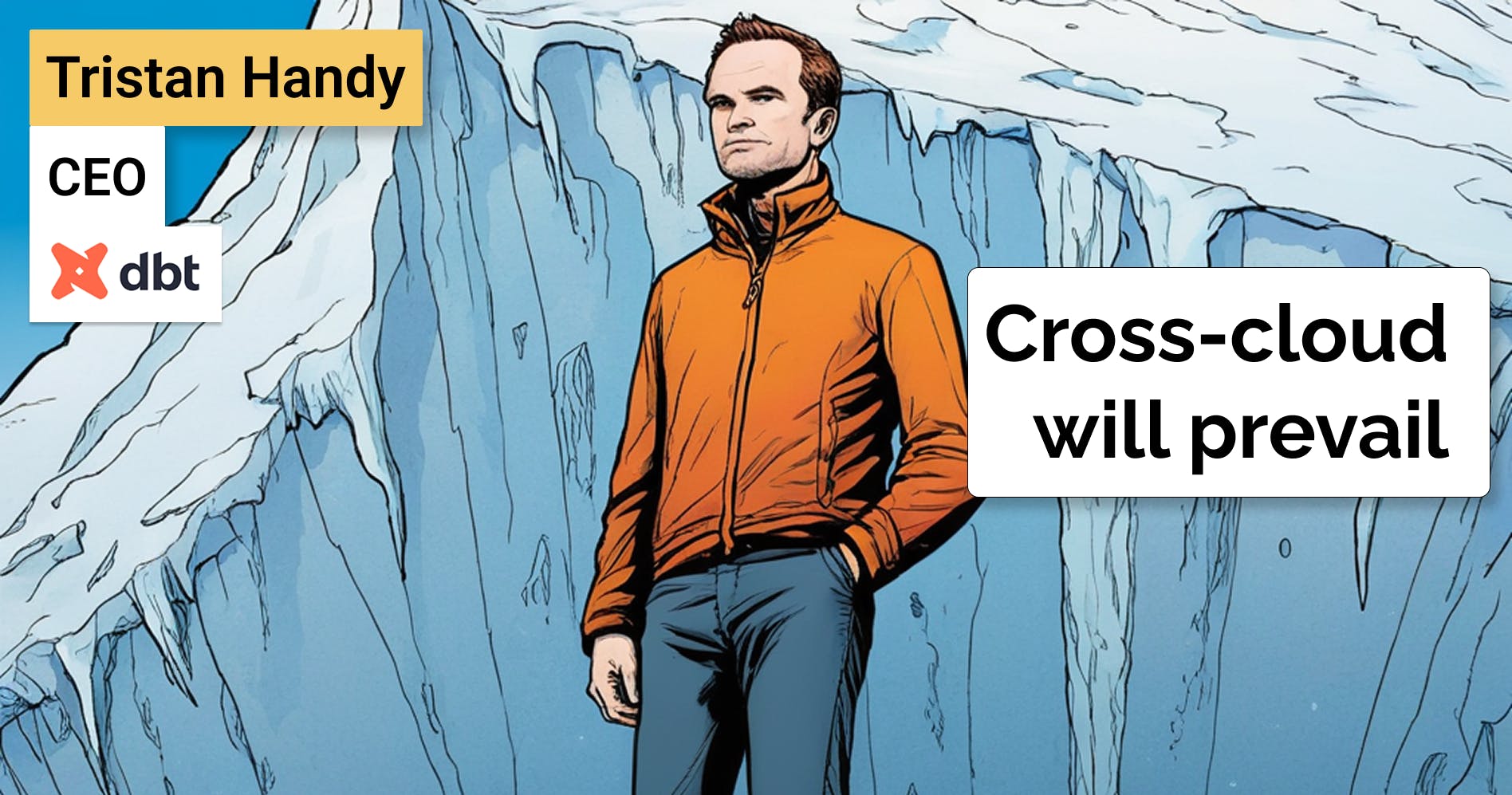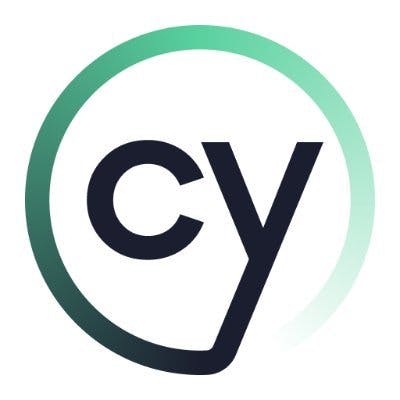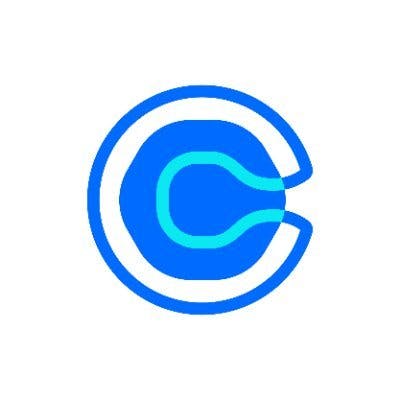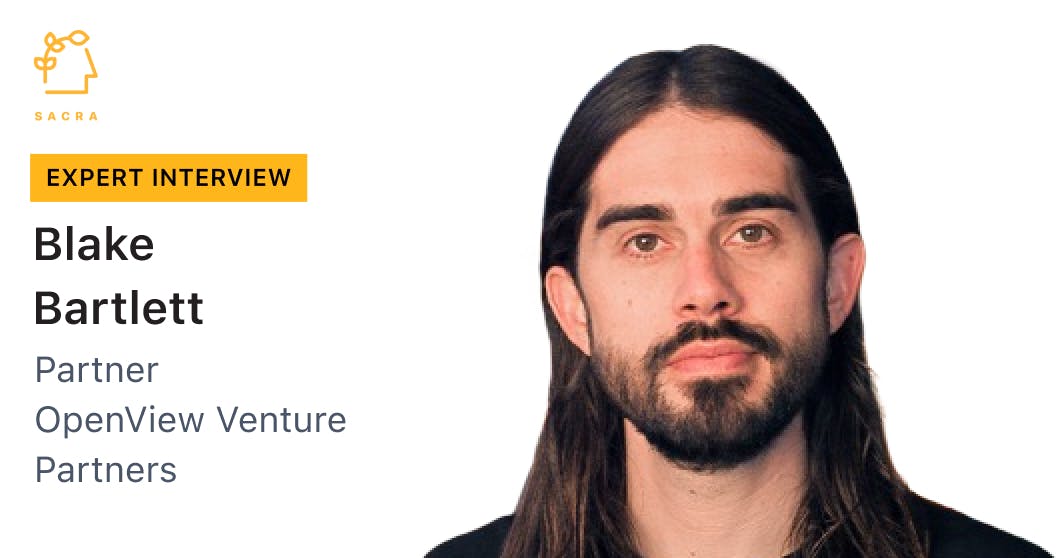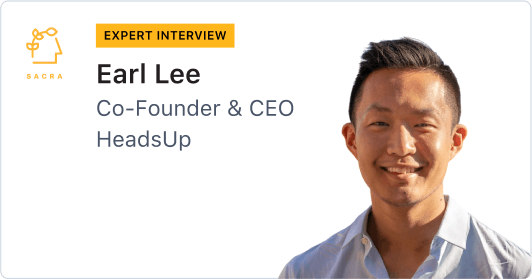Thomas Schiavone, co-founder and CEO of Calixa, on the PLG data pipeline
 Jan-Erik Asplund
Jan-Erik Asplund

Background
Thomas Schiavone is the CEO and co-founder of Calixa. We talked to Thomas to learn more about two major trends that Calixa sits at the middle of: (1) the data warehouse becoming the center of gravity in the organization, and (2) product-led growth as a capital efficient, low-CAC strategy for growth.
Questions
- Let’s start with context. What is Calixa, and how did you come to start it?
- How do people use Calixa? Do they look at the dashboard to see different people or organizations that are important, then go off to a CRM or other tool to actually take action?
- You mentioned that Monkey was used by all these different teams internally. I'm curious what kinds of trends you see with Calixa around usage? Is it as dispersed?
- On the larger side, are you seeing companies come on that want to just pipe data into Salesforce or HubSpot?
- That helps clarify the difference between Calixa, reverse ETL and just a traditional CRM.
- Is there a way teams would use both Calixa and Census or Hightouch?
- You mentioned your distaste for the term “PLG CRM.” I’d love to hear more about that.
- I think part of the problem is obviously having two acronyms, “PLG” and “CRM.” It doesn’t look good.
- Do you have a sense of what are the most popular data sources and also the tools people are using to implement learnings from Calixa, whether it's going to another tool or taking action within Calixa to cause an effect in another tool?
- In talking about reverse ETL, one thing we hear often is that it’s adopted and used by the data team. Obviously, that's different from tools like Zapier, which completely non-technical teams can use. Where does Calixa fall on that spectrum? How much of an engineering resource need is there to set it up?
- Do you have a sense of what changed? It sounds like just carving out data teams as separate from the engineering team was a big part of it.
- How important to this is this idea of SQL as the common language that all these tools speak?
- I’m curious to hear your thoughts on where HubSpot, Salesforce -- the traditional CRMs that were the locus of all customer information -- might trend long-term, given both PLG adoption and the data warehouse becoming the center of gravity.
- It sounds like you'll have that button the investor wanted that turns companies into PLG.
- You talked about this idea of sales being just one aspect of the platform and the future vision being to unify sales, marketing and product. I’m curious to hear more and get into some of your thoughts on the size of the market and TAM.
- Zooming in on the modern data stack trend, would you say a big part of that is the data warehouse becoming more important? And when you talk about empowering end users, is that like empowering marketers to use real data sourced from the warehouse and not rely on a filtered view created by someone else?
Interview
Let’s start with context. What is Calixa, and how did you come to start it?
I would say the formative experience for me was that I was the first product manager at Twilio. I was the 15th employee. The business was just really starting to take off, like I could squint at it and see, "This is going to be fucking huge." At that point, it was probably only 25k, maybe 30k, MRR. But you could see it because people were signing up and doing shit. I love developers and developer platforms and just letting people build on you.
The challenge was, "Well, how do you figure out who to talk to about what?" We weren't looking at Salesforce because it didn't have the data we wanted. Our bottoms up motion meant that developers were signing up before we even talked to them. Twilio’s marketing engine with developer evangelists was doing a great job getting the word out there, and people were flocking to us.
So how do you figure out who to talk to? You need to expose the actual product usage and then give a way for people inside the organization to figure out who's doing what, prioritize those people, and take action on them all in one place. So we built a tool called Monkey. Product, engineering, and ops needed this tool but it also took off within the broader organization. Our salespeople, our support people, our success people were leveraging this tool as part of their every day. And I thought, "Huh, this is interesting."
Fast forward 10 years, when I was looking for ideas for what to build, I realized, "Well, I've been at a bunch of companies since, and most tools are shittier than the Monkey thing we built." How is that possible? I think the reason why it was so good is because Jeff Lawson, the Twilio CEO, is so passionate about customers. He’s customer-driven, customer-focused. Most CEOs are not as much as that. He's the max.
Most companies don't want to devote product and engineering resources to this problem. And I think we have an opportunity to build an opinionated view on this data and build a place where customer teams can really understand who's using the product, how they're using it, and build it into the workflow of how customer teams function. I think it's a combination of analytics understanding with customer/sales workflows. That was what was powerful about Monkey, and I think a more refined version of that is Calixa.
How do people use Calixa? Do they look at the dashboard to see different people or organizations that are important, then go off to a CRM or other tool to actually take action?
I think it's a failure if that's how people use it. As you're getting going and building out your capabilities, you may have a smaller set of functionality, so that's how it is. But I think that's ultimately a failure.
There's a great tweet that I like from the CEO of Amplitude: basically, every product is fundamentally an analytics product. No one wants to think of it as an analytics product. It's really, fundamentally: what customer pain point are you solving or what workflows are you building on top of it?
This was one of the challenges of pitching Calixa originally. I was like, "Hey, you need the BI component, but you also need this workflow component and this automation component.” All these three things need to come together to be a very powerful platform, because you want to do as much as possible with one tool. You don't want to be jumping around.
You need to have analytic or BI-like capabilities, but they have to be easy to use and seamlessly integrated and have an opinionated view. I'd say BI is super flexible. I don't think we want to be super flexible. I want to be appropriately flexible but opinionated as to what customer teams and SaaS companies need.
I think that's an opportunity we have as we think about SaaS CRM. Building an opinionated view for SaaS companies is an opportunity for us, because CRMs today have to handle oil and gas companies as well as they handle a SaaS company. What if we just said, "Fuck, I don't care about oil and gas." Nothing wrong with them. It's just that we can do something very powerful if we focus on solving the problems of SaaS companies.
You mentioned that Monkey was used by all these different teams internally. I'm curious what kinds of trends you see with Calixa around usage? Is it as dispersed?
Yeah, I think so. I think the reality, though -- especially as it's bringing new religion to people -- is that not everyone gets it. Initially, I was like, "Hey, Monkey makes sense; pitch the Monkey vision to people.” But that cuts across too many departments and too many things. For any established company, it's like, "Who buys this? I don't understand. It's a little overwhelming."
For medium and established companies, we've focused more on the sales motion, in particular the bottoms-up product-led motion. What happens is you get inside a company, and the success team over there says, "Well, that's pretty cool." Then some sales leader says, "It'd be cool to have this one tool across the whole journey." And then the support team sees the views that these other people have and is like, "Oh, I want that." For medium and larger companies, the insertion point is sales, because it's a very clear buyer, somebody you can talk to.
Sacra highlight
For startups -- roughly 50 employees or less is my rough framework for how complex and mature an organization is -- you can actually go in and be what I'd call the SaaS CRM, because they're not as wedded to, say, "I need to use HubSpot. I need to use Salesforce." It may come, and I want to play nice with that. But a lot of these companies are saying, "Okay, I want to build a product-led foundation and then later layer on top-down." What if I consider my primary motion as bottoms-up? Well, then I'd pick tools that are optimized for bottom-ups, product led, sales-assist motions, rather than choosing your CRM because, "I have a top-down sales process and I need something to manage those conversations."
I know CRMs do a lot more than that. There's a lot of good that CRMs can do and a lot of reasons why we need to play nice with them. But for a company that starts today, you can reimagine, "If I am product-led, if I am bottoms-up, well, what do I want my people using today?" If that's the primary motion you want to get right, you want a tool that's optimized for that.
If you're starting fresh today, there's nothing to displace, so you're open-minded. Startups in general don't really want to implement Salesforce or HubSpot until they really fucking have to.
I'll give you an example. I was on call with a 50-person startup in December. They said, "Calixa is really cool, but we're doing this Salesforce implementation. I thought it was going to be done by the end of February, but it's now going to be into the end of March." And I was just like, "What the fuck are you doing? Why is it taking this long?" It's like, "Oh, data mapping." I thought, "We could do this in a day." Obviously, if we were to tweak it and tune it perfectly for all the things, it would be maybe a week.
There’s something fundamentally broken with the fact that people are okay with a three-month implementation window, especially since this was a developer-led company, with developers signing up to use the product. I'm thinking, "Why are you optimizing for this other way of being?" I think there's a fair bit of evangelism that needs to happen. And I think this crop of SaaS CRMs or PLG CRMs - a term I don’t love - needs to grow up in maturity and do enough for these people.
On the larger side, are you seeing companies come on that want to just pipe data into Salesforce or HubSpot?
Yeah. We've taken the opinion that, if all you want is to just pipe data into Salesforce, you should be using reverse ETL. That's probably the better tool for now. If you think Salesforce or Hubspot is good enough, it will take some time for you to learn the PLG religion. We need to prove to you that a Calixa is the place your customer should be doing work if you’re product-led.
I think we want to play nice with existing CRMs if they are important to you but we want to provide a differentiated experience that’s purpose built for product-led companies. I think there's appetite for, "You know your product plays nice with HubSpot and Salesforce. I guess my reps don't actually have to be in there as long as they can do the things that I expect of them, so I can report on it."
That helps clarify the difference between Calixa, reverse ETL and just a traditional CRM.
I think reverse ETL is amazing. Don't get me wrong. But for me, it's like, "Oh, if you want to pull stuff in from your warehouse, you should either push it to them or we’ve built it in directly now. So you can just boot up a CRM on top of Calixa. Just connect your Snowflake. You can even easily push your custom objects to us.” We feel we can give a better opinionated view if we give this direct warehouse connectivity and treat the warehouse as a first-class integration.
Sacra highlight
We play nice with Census. We play nice with Hightouch. I like both those companies. They're good people. But at the end of the day, I also want to offer the direct route because we have a lot more flexibility there for how we can create a better user experience specific to our product.
Oh, for sure. We have customers doing that today. First of all, there are plenty of other tools besides Calixa in this world, and the warehouse is a treasure trove. So it makes sense to want to pump it to those tools as well. However, we can say, "Hey, you can easily get set up on Calixa and directly connected and build your objects. It's easy breezy. Don't worry about it."
If you want to use Census or Hightouch because you prefer that one centralized place to do your syncs, sure. I'm not going to drive a hard and fast line. I think we can offer a better experience that's tailored to Calixa -- just around how you build out your objects and do the syncing and all that sort of stuff. But I'm open to either approach. For me, I want to offer customers maximum flexibility from a data ingestion perspective. It should be easy. Whatever's easy for them, I'm happy to support.
You mentioned your distaste for the term “PLG CRM.” I’d love to hear more about that.
People are attaching “PLG” to everything and getting excited. I've had some investors say, "Oh, can your product make these people PLG?" I’m like, "Okay, you're missing the point." There are things we can do to help align your organization that way, but fundamentally, there's no instant PLG button. So I'm a little bit counter the term because it's just overhyped and overplayed. I just don't like people attaching “PLG” to things and thinking, "Instantly, that's 10x more valuable."
The term that I've heard more recently that I liked was this idea of a SaaS CRM. It’s the CRM that's opinionated for SaaS software companies. We'll see what it becomes. It's still early. We'll see what name sticks. Some people are trying “product-led sales platform.” It could be that.
I do think you need something like this, because that bottoms-up motion -- letting customers use your product right away -- is a fundamental shift. There's a fundamental shift of: "Hey, if you want to empower your organization to align on customers, how do you align sales, marketing, product, support, and any other organization around the customer and the customer journey? You need a frame of reference across that." But I think of it much more as, "How do I create a customer platform across the bottoms-up motion?"
I think part of the problem is obviously having two acronyms, “PLG” and “CRM.” It doesn’t look good.
Yeah. I will say this, however: when I talked to friends about Calixa in March 2021, when we launched publicly for sign-up, and I’d say “PLG,” they’d say, “What the fuck is that?” I had a friend who's at Twilio. He was like, "PLG? What kind of fucking acronym is that? I just call that building a damn good product." For some people who are already converted, that makes sense. I think there is much larger set of people who are yet to be converted.
When we announced our Series A, everyone -- even their mom or dad -- was like, "PLG? Oh yeah, I know PLG. Product-led growth. It's so hot. Oh my God." Even in the past six months, there’s been such an acceleration in awareness and the desire for existing companies to figure out, "I need a motion like this. How can I invest more in it? Is there a motion that I have that's like this?" I think that's interesting.
Do you have a sense of what are the most popular data sources and also the tools people are using to implement learnings from Calixa, whether it's going to another tool or taking action within Calixa to cause an effect in another tool?
Your question is, "Hey, what does Calixa play with?” There's a today, and there's a tomorrow. The today, I'd say, is twofold. In general, the primary means of identifying these customers is to have a tailored conversation, not just to hit them with another marketing message that everyone's so blind to that they just see through. This notion of the empowering SDR, BDR -- whatever term you want to use -- to find promising customers, understand their usage, and craft tailored messages to what they're doing.
A primary workflow is that sales communication workflow. It's a combination of CRM and sales engagement tools, like an Outreach or Salesloft. And some people just go directly to their own email. It’s basically, "What's your flavor? How sophisticated are you? Also, how dogmatic is your organization about your tools and processes within your CRM or sales engagement tools?" That’s one class of stuff.
In general, it comes down to, "How do I enable my team to be aware of people whom I should be engaging with, reaching out to, and coaching along? Does somebody need action today? Does somebody need action next week? And how healthy are things? Because of the ease of product analytics, people can understand and find new cohorts, and then follow them, track them and coach them onto success.
The long and short of it today is basically downstream: you're going to have a conversation with a human being. There are multiple different tools in which you can have conversations with other human beings. Then there's a sales process connected to it. It's really how personalized or automated it is.
Some of it could also be reporting, too. We have some people that say, "I can't get this data elsewhere. How do I get the way you consolidate it on the user level and the account level, and the flexibility? I wish you could query it." That's freaking powerful. So it actually can even be a way to just track their performance.
In talking about reverse ETL, one thing we hear often is that it’s adopted and used by the data team. Obviously, that's different from tools like Zapier, which completely non-technical teams can use. Where does Calixa fall on that spectrum? How much of an engineering resource need is there to set it up?
You sign up and you just link Segment, Salesforce, Intercom, Stripe, Zendesk, etc. There are all simple OAuth flows. We take care of the rest. It's pretty painless for users of all types.
If you want to use the data warehouse, it means that you likely need to involve someone with the right access. Oftentimes the person who's pulled in the warehouse could be a PM or sales op person. It's not hitting traditional engineering resources.
I've really been impressed with how data teams are really having the data and wanting to empower their counterparts. Rewind a decade in my career, and there would be frustrations when you're trying to have the engineering team enable the sales team, because they had so many responsibilities. The beautiful thing about the data team is it’s focused on its mission. It's empowering the organization with data. So they get excited that they can play their part in helping their counterparts in other parts of their organization, especially if you're willing to speak the languages that they speak. As long as you play nice with the stack of tools that they expect to be able to use, there are no objections there.
The hardest part is the initial onboarding. Once it gets set up, it doesn't require a super technical person to create the syncs. If you have an understanding of, "Here's what the columns are, and here's what they mean. Here's what they mean in the tool,” it's just a mapping exercise. I think the biggest lift, the hardest part, is actually just that connection. And that's not hard. It just like, "You might have to add some permissions to your BigQuery so that this thing can connect." Not a big deal.
Now with data teams, I feel like more than ever they have clearer partnerships with their counterparts because they have a very clear mission and mandate. It's pretty cool.
Do you have a sense of what changed? It sounds like just carving out data teams as separate from the engineering team was a big part of it.
It's specialization. I don't want this to come across as the data team is separate from engineering. It's a set of engineers that have a given mission. Core engineering has teams, but was there ever a team that said, "I care about enabling my GTM counterparts?" No, you always had other things, and it actually required a lot more engineering bandwidth to set up these pipelines. But now with Fivetran, Snowflake, dbt, the full modern data stack really makes it so that, "Okay, all that stuff just happens."
Now you can have people thinking about higher-level, more important things for the organization. Just the modern data stack and the sheer proliferation of tools on top of it unlock the ability of an organization to actually do something with their data rather than spending a bunch of time setting the thing up.
How important to this is this idea of SQL as the common language that all these tools speak?
For us specifically, no. In general, yes.
To use Calixa, we don’t want you to have to know SQL. We want it to have the broadest audience and we want it to consume the data that’s already been transformed by the data team. Setting up sync should just be a UI mapping exercise.
I haven't come across a situation where somebody says, "Oh, I have these things in these two tables,” I say, "Well, you should use something like dbt,” and they're like, "Oh, yeah, that makes sense. I'll go do that." We haven't hit any nasty roadblocks.
SQL as a lingua franca is helpful because most people can understand it enough, but I actually think it's a failure for us to have to drop to that level. I would like it at a point where it is just a trivial, simple mapping exercise, and we take care of the rest.
I’m curious to hear your thoughts on where HubSpot, Salesforce -- the traditional CRMs that were the locus of all customer information -- might trend long-term, given both PLG adoption and the data warehouse becoming the center of gravity.
I think about it systematically,: something like Salesforce, why do people tend to implement it early on in an organization? "I’m a sales leader have a traditional sales team that is a top-down sales process, and I'm used to it. I expect it. I expect reporting on it. It's not because the reps like it. It's just how I manage, understand and measure my world." It totally makes sense.
I think that the pull becomes: if you can't do this product-led motion well because the tool can’t handle it, and top-down sales is not the primary motion or even the first motion people are trying to nail, then you have some gravity of power switching away.
I had this on a call with a startup this week where there were six people on the call. One person who's responsible at the top was pounding me on, “I hate my CRMs. I don't want to use them, but I can't do everything I want in your tool. Here are the things that you need to do to help me with my top-down motion.” And I was like, "Well, we're going to do part of that, but you’ve got to understand -- we're focused on product-led so we're going to try to actually tailor to your other counterpart and make sure that their life is delightful. Maybe we can help you with some of it, but we're going to first prioritize that person.” Just back and forth and back and forth. At some point, the CEO stepped in and said, "Hey, maybe they're right. This is the company we want to build, a PLG company. We'll have a top-down motion, but let's optimize for PLG.“ And I was like, "He’s got it."
That being said, if I'm putting myself in the top-down salesperson’s shoes, he's thinking, "Yeah, but I need to fucking do my job. Can I have a tool that works for me?" I'm sympathetic to that. The question is: can you build a place where the needs of the top-down and the bottoms-up can coexist?
Then, second is: how do you build a platform that unites sales, marketing, and product for a common understanding of the customer and the customer journey? Sales is a specific implementation of the platform we're building, but I think there are way more interesting things when we up level it beyond just sales. Ultimately, Calixa is never going to do it all, but how do we become the de facto underlying platform that can speak out to the right things? When you want to go back to the “system of record” around your motion, Calixa has all the connections: in, out, and all around. There's this set of things we do, and there's a set of things we don't do. If you need these other things that we don't do, we play nicely with them and respect them.
What's particularly interesting -- and this is the direction we're going -- is, because we have these really interesting data and event streams, there are a lot more interesting things we can do for you, both from a sheer data flow perspective and automation and orchestration, but also potentially from a machine learning prediction standpoint. We see everyone who's doing well; we see the full event stream. We can figure things out.
Part of the reason why we’re particularly bullish on this is the previous company I worked at was Sift, which did machine learning for fraud detection. My co-founder of Calixa was also the co-founder of Sift. So that's in our DNA. Having this really rich event stream is really exciting. For product-led motions, bottoms-up motions, the hardest thing for these companies is understanding it, structuring it, finding the signal in the noise, and then finding the key indicators. I think we have an ability to help them with that: help them structure it, help them identify who's valuable, and provide those insights to sales leaders and the individuals.
It sounds like you'll have that button the investor wanted that turns companies into PLG.
The way companies express it today is: "I have a bunch of people signing up. I'm not really sure who to talk to. I don't really know the stages of our journey. I don't really know the metrics. I have to run some experiments. I need to access the data team. Oh, they're going off doing some science. But my science is..."
I was talking to a fast-growing B2B startup the other day. Thousands of sign ups per day. I asked them, "Hey, how are you thinking about this?" They told me, "Well, the product and data teams are off running experiments to figure out how to make the product more viral, but they're not really thinking about which customers turn into revenue. And their experiments are a little divergent for what we want." And I said, "Hey, maybe there's a way that we can enable these customer teams, and even the product and data teams, to have this one centralized view for understanding what's going on: what are the key points on the customer journey, and then what are the key signals where there's an unlock."
“If you get the account to do X in the first 30 days, then they have a high likelihood of becoming a high value account.” Those were some of the experiments we did early on at Twilio for finding what were the right examples of customers to go after and usage patterns for what to really dial in on. But that required a lot of data science and analysis. What if you had that easy button that just did it? Because we have all the observations, we have the training data, we have the event stream. We can just do it for you.
You talked about this idea of sales being just one aspect of the platform and the future vision being to unify sales, marketing and product. I’m curious to hear more and get into some of your thoughts on the size of the market and TAM.
I'm awful when you ask those questions. For every company I’ve chose to join, I was like, "Are these people smart? Is the market freaking huge? Can I stick my finger up, the wind blows, and I know it's going to be big?" I just fundamentally understand the pain point, the direction the market’s going in and a couple of compounding trends -- both the growth of bottoms-up and the growth of the modern data stack -- two massive waves that I'm more than happy to be surfing.
I'm not the type of founder who says, "Let me do some TAM calculations." I'm just convinced these markets are huge, and we're going to go after them. We're going to find big, interesting markets to go after. I look generally at what are the massive trends to surf and then figure out the way to surf them.
When you look back at my career, for example, the start of my journey was at AdMob. Why did I join AdMob? I was addicted to my mobile phone, browsing on WAP in 2006. It was the shittiest experience, but I was on a bus 45 minutes each way. I thought, "This is going to be huge." And guess what? The iPhone came out. The rest is history.
Developer APIs -- I saw the power of developers on iOS and then eventually on Android. I was like, "Developers. Wow, if you empower them and get out of their way, magic can happen. What else is like this? Oh, Twilio, APIs. Great, let's go."
When I look at the trends that are exciting to me, it's everyone embracing bottoms-up and then modern data stack. Those are two mega trends There's been so much rethink that at some point people just start saying, "Yeah, maybe it's time for something different. Maybe there's this new category.” I think SaaS companies deserve an opinionated CRM platform to run their businesses. It’s especially critical for companies who are leading with a product-led motion.
Zooming in on the modern data stack trend, would you say a big part of that is the data warehouse becoming more important? And when you talk about empowering end users, is that like empowering marketers to use real data sourced from the warehouse and not rely on a filtered view created by someone else?
Yeah, it's empowering sales and marketing and other professionals to treat them like adults. Sometimes people are like, "Oh, let's not give them too much information. They shouldn't handle it." I think, "No, empower them with an easy-to-use tool." Have opinionated company views so everyone's at the same table. I think oftentimes you had those things in the past, because it was like, "Oh, that metric is really not that metric.” But now, you have a metric store. That metric is the same metric everywhere in every tool. Don't worry about it.
As you have that capability, I think a lot of the worries can go away. And as we respect the end user more and more for their ability to use software and their data fluency, a lot of good stuff happens out of that. I'm a big fan of empowering people. I think you're always surprised at what people can accomplish when you give up your fears of, "Oh, they might do something dumb." Everyone does something dumb. Get over it. I have an ex-colleague who used to say, "Don't build foot guns." If you're building software, is the gun pointed down so that when they pull the trigger they shoot their feet? Yeah, don't build that. But I think there are ways to build software that it's empowering.
You made a comment about the data warehouse. I think it's the ease and ability to access what I call “gold standard data.” You might say source of record, whatever it is. To me, this is the gold standard that everyone should be using. The ease of getting that data other places and then doing things with it is the value of the modern data stack. It's really just the outcome of having high quality data that is sanctioned and the ease of getting it into other tools. That's the beauty of it.
Sacra highlight
I do think there's a lot of value in that it’s sanctioned. The data team who is the steward of the data isn’t scared, because you're referencing the things that they have set down. They know if they make a change, it's going to propagate downward, and everything's hunky-dory. I think that's pretty fucking exciting.
Disclaimers
This transcript is for information purposes only and does not constitute advice of any type or trade recommendation and should not form the basis of any investment decision. Sacra accepts no liability for the transcript or for any errors, omissions or inaccuracies in respect of it. The views of the experts expressed in the transcript are those of the experts and they are not endorsed by, nor do they represent the opinion of Sacra. Sacra reserves all copyright, intellectual property rights in the transcript. Any modification, copying, displaying, distributing, transmitting, publishing, licensing, creating derivative works from, or selling any transcript is strictly prohibited.


